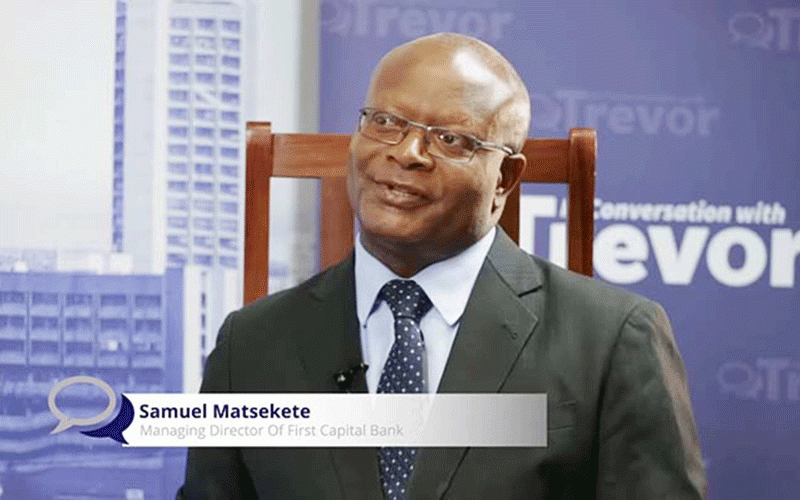EVERY leader or manager’s dream is to have a business that is performing very well.
When there is low business performance the leader has to employ other tools and strategies to get back into business.
Low performance brings distress and low profits. Let’s explore organisational performance that keeps the company ahead of the game.
Talent identification, management and improvement
The best resource that every company has is its workers or human resources.
For every machine, system to work, people are needed.
Keep Reading
- Re-imagining the workplace: Google and other company visions
- Accident, piracy affected my career: Zembe
- Kim Jayde revels in SA award nomination
- Building narratives: Chindiya empowers girls through sports
With effective people, we have an effective business.
First, business performance must have talented, skilled and effective people.
A personal development expert, Dr Myles Munroe once said: “Greatness is in everybody. A good supervisor brings out the greatness in each employee. Leadership is creating an environment that allows people to manifest their gifts for the corporate good. That is good business, and that is great leadership.”
There are many ways of developing people. This is through coaching, mentoring and modelling.
Talking about coaching, book The Complete Handbook for Coaching says it is “a human development process that involves structured, focuses interaction and use of appropriate strategies, tools, and techniques to promote desirable and sustainable change for the benefit of the coachee and potentially for other stakeholders.” (Cox, E. et al, 2010).
People development should be central for every company. People must be trained and empowered.
The book Understanding Business under IBDL, Dias and Shah (2011: 118) states that: “Training and development include all attempts to improve productivity by increasing an employee’s ability to perform. Training focuses on short term skills, whereas developments include long-term abilities. Training and development include three steps: (1) assessing the needs of the organisation and the skills of the employees: (2) designing training activities to meet the identified needs; and (3) evaluating the effectiveness of the training.”
Training includes: seminars, workshops, job shadowing, on and off-jobs training, vestibule training and internship.
Tailor made training programmes should be created by the organisation.
These improve team dynamics, boardroom dynamics, personal effectiveness, human relations, emotional intelligence, and problem solving. So, empowerment has its advantages.
Becker et al, (1994) say with employee empowerment, there is less need for supervisors thereby reducing costs.
So, as soon as an organisation realises that there is low performance, it must improve, re-tool and empower its workforce.
Recognition and rewarding
Human beings have that intrinsic need to feel recognised and rewarded.
Employees put more effort if they know that they are recognised and appreciated.
People stay where they are appreciated.
Recognition includes awards and incentives.
According to the Gallup, “Workplace recognition motivates, provides a sense of accomplishment and makes employees feel valued for their work. Recognition not only boosts individual employee engagement, but it also has been found to increase productivity and loyalty to the company, leading to higher retention.” (Mann and Dvorak, 2016).
Leadership and management matrix
Leaders are supposed to create a culture of quality in an organisation to improve performance.
Maxwell (1998) rightly pointed out, “everything rises and falls on leadership”.
A culture of quality minimises mistakes in a work environment.
Leaders cascade a culture down the chain of command.
Leaders are the captains, so they should drive the whole organisation to the right direction.
Market awareness
Companies must keep an eye on market dynamics.
Market dynamics are comprised of two things: the customer and competition.
The customer brings revenue and his needs are constantly changing.
With the advent of information technology, consumer behaviour and buying trends are always changing.
All tools that endeavour to improve performance must have the customer in mind. It has been said the customer is king.
Market awareness makes the organisation to look for competitive means to stay abreast and afloat.
One tool, to accomplish that is called benchmarking. Westbrook, (1993, p. 13) defined benchmarking as an “act of finding out what the best practices and processes are in business the best of the best, anywhere in the world and adapting and implementing them, or even going them one better, in your own firm.”
Communication
Communication should be clear, consistent, compelling, credible, conscious, appealing and be relayed to every organ of the organisation. How is that Possible? It is through communication.
Communication builds a brand. Communication is not only sending a signal or a message, but listen to those who are suppose to implement the strategies.
Culture of quality
A research study reported in the Harvard Review found that, “A company with a highly developed culture of quality spends, on average, US$350 million less annually fixing mistakes than a company with a poorly developed one.” (Srinivasan and Kurey, 2014).
The culture creates the aura or the gravitas of an organisation. Poor performance can be solved if the leaders instils a culture of quality to all departments.
Design thinking
Deign thinking is being on the lookout for ways to innovate.
New companies, such as Google, Facebook and Instagram has redefined how organisations should be run.
Their major thrust is to have their organisations as centres of generating ideas and disrupting what might have been good yesterday.
Continuous learning and learning agility
At times the cause of low performance might be based on the unwillingness to learn.
An all-time classic quote by Eric Hoffe says: “In times of change, learners inherit the earth, while the learned find themselves beautifully equipped to deal with a world that no longer exists.”
So keep up with change companies should embrace learning agility.
The times are turbulent, treacherous, tough, trying and taunting to those who do not want to adopt and adapt.
The leader has to be willing to quickly adopt new tools, techniques that are relevant in solving complex problems, in confronting new hurdles, and facing new challenges of our times.
The leader has to constantly and continually be developing, growing, and using emerging tools.
Jonah Nyoni is an author, speaker, and leadership trainer. He can be contacted on X @jonahnyoni. WhatsApp: +263 772 581 918





